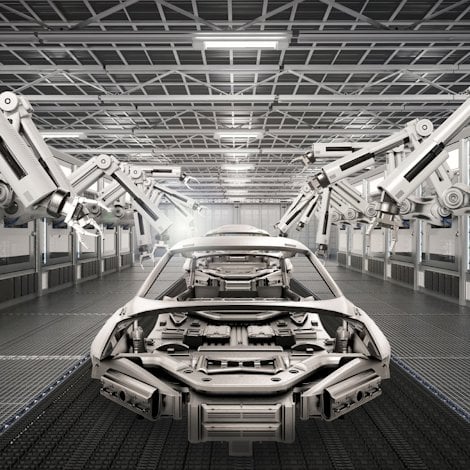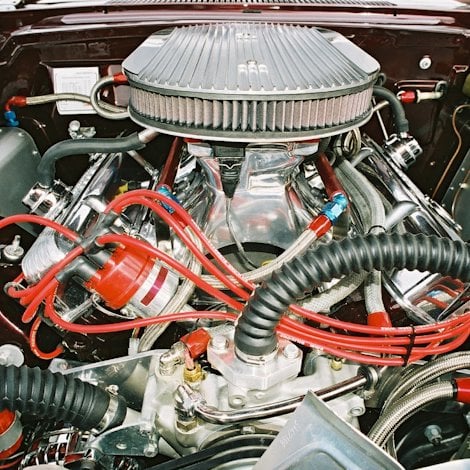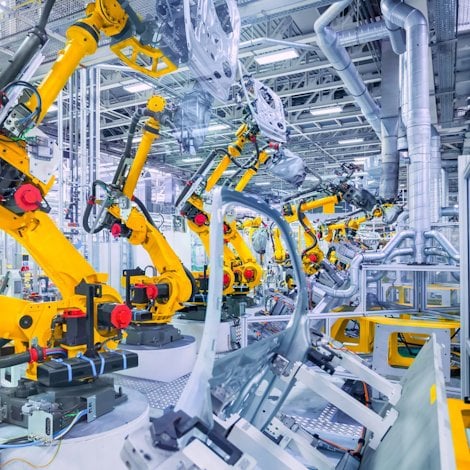What are the booming materials in the automotive market? Trends for 2020 and beyond
European carmakers are facing stricter regulations and demands to further cut their carbon dioxide emissions. This is impacting the way they choose the materials they use to build their vehicles. Here are the trends we see in the automotive market in the years to come.
Trend 1: Aluminium is fastest growing automotive material over competing materials
In a study commissioned by European Aluminium’s Automotive & Transport Board, DuckerFrontier predicts that the amount of aluminium semis used in cars produced in Europe will increase by around 10 percent, from 179 kilograms today to nearly 200 kgs by 2025. This makes aluminium the fastest-growing automotive material, viewed against competing materials.
More than half of the volume will remain in the form of aluminium castings, even if casting content is reduced due to the downsizing of internal combustion engines and due to the elimination in case of electrification. The use of rolled aluminium products will rise, as will extruded aluminium content. The latter is expected to grow to gross weight of around 33 kgs per car (nearly 27 kgs per car net). In fact, extrusion content will grow the most in percentage terms.
This may be a conservative estimate, since Ducker bases its build rates on LMC Automotive analysis. This covers EU-28 countries but excludes Turkey.
Trend 2: European carmakers will struggle to reach CO2 emissions targets
European carmakers are far from achieving their carbon dioxide emissions targets, based on the figures in Ducker’s 2019 report for European Aluminium. In fact, they may have to work miracles.
Why? Because the average emissions from new car registrations increased year-on-year, from 119 grams per kilometer in 2017 to 121 grams per km in 2018. Higher sales of SUVs, delays in new technologies, and an uptick in sales of diesel-driven vehicles were the reasons for this increase.
OEMs need to reduce this amount by 21 percent to 95 g/km, according to their 2020/21 target.
These targets are not getting any easier, either. The European Commission tightened their CO2 emissions regulation for passenger vehicles for 2025 and 2030. They look like this:
- A 15 percent reduction (compared to 2021) in 2025
- A 37.5 percent reduction (compared to 2021) in 2030
This works in aluminium’s favor, due to the light weight, stiffness and high strength that the material delivers.
Trend 3: Demand for low-carbon aluminium will increase
The vast reductions in CO2 emissions that European authorities are demanding from carmakers, in the use-phase of their vehicle fleets, are leading OEMs to replace more of their fossil fuel-driven vehicles with cars powered by electricity. Yes, you already know this.
But what you may not know is that this will impact the way they choose the materials they use to build their cars, quite simply because zero-emission vehicles do not have tailpipe emissions. There will be no use-phase emissions anymore. However, it matters where and how aluminium, and other materials for that matter, is produced. If OEMs look at substitution, then recycled or low-carbon aluminium produced with renewables need to be a prerequisite.
It is also worth mentioning that the full life-cycle CO2 footprint remains a challenge when looking at electric vehicles, although we do see – especially in the field of batteries – significant improvements. We also expect new technologies when it comes to the recycling of, for example, lithium, which would be a major breakthrough and would impact the life-cycle footprint substantially.
In the years to come, carmakers should therefore use an increasing amount of low-carbon materials to reduce production-phase emissions. And we see aluminium as one of the clear winners, for two reasons:
- Weight is critical for e-mobility performance, and aluminium offers light weight, high strength and recyclability
- Low-carbon products substantially reduce aluminium’s carbon footprint and make it more competitive against other materials
Trend 4: Sales of zero-emission and low-emission vehicles will rise dramatically
The sales of zero-emission and low-emission vehicles (ZLEV) in Europe is low. Battery-electric vehicles totaled 1 percent of new car sales in the EU in 2018, and hybrid-electric vehicles accounted for 3.3 percent.
Vehicles powered by fossil-fuel products accounted for 92 percent of new car sales.
But that was yesterday. Tomorrow? The EU wants ZLEVs to represent 15 percent of overall sales in 2025, and 35 percent in 2030.
This gives us yet another reason to state that aluminium – also low-carbon aluminium – will be integral in the manufacture of passenger vehicles in the near future.
And let’s not forget that fuel cell vehicles could become another alternative in the long run. And here we also see an over-proportional use of extruded aluminium (~40 kg per car), e.g. for the fuel cell system, hydrogen tank, electric motor, the battery and power electronics.








